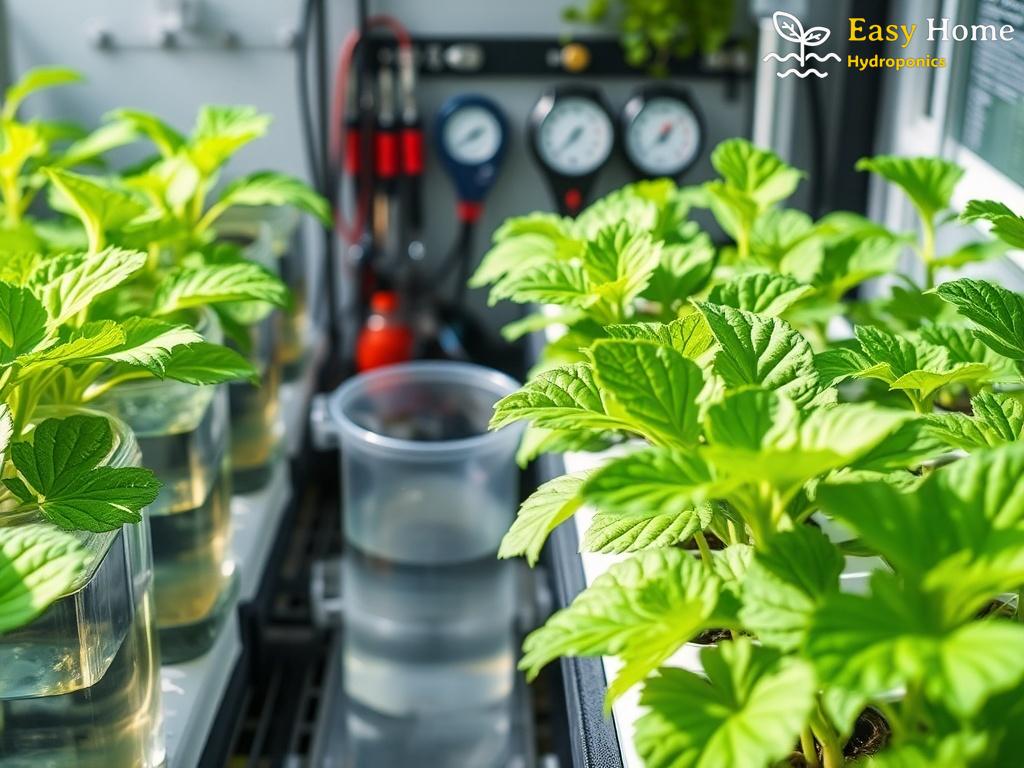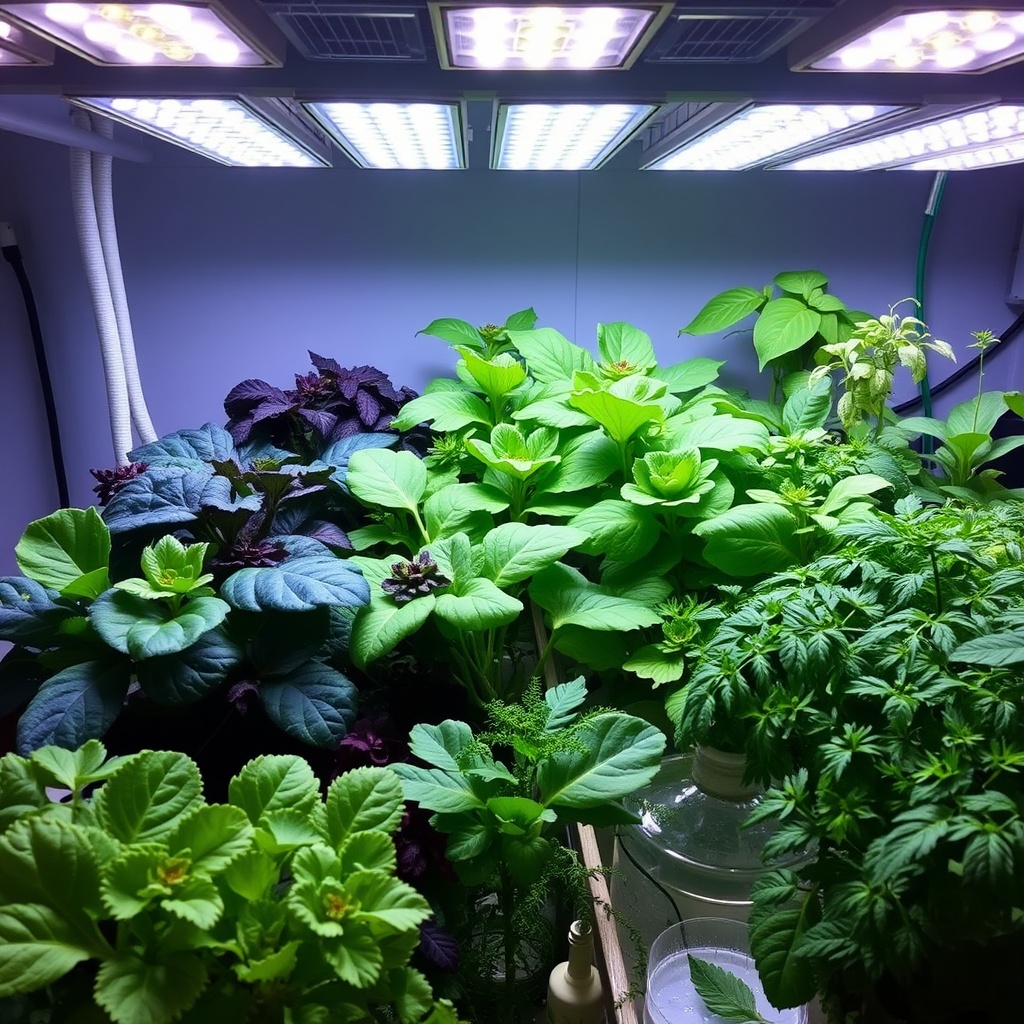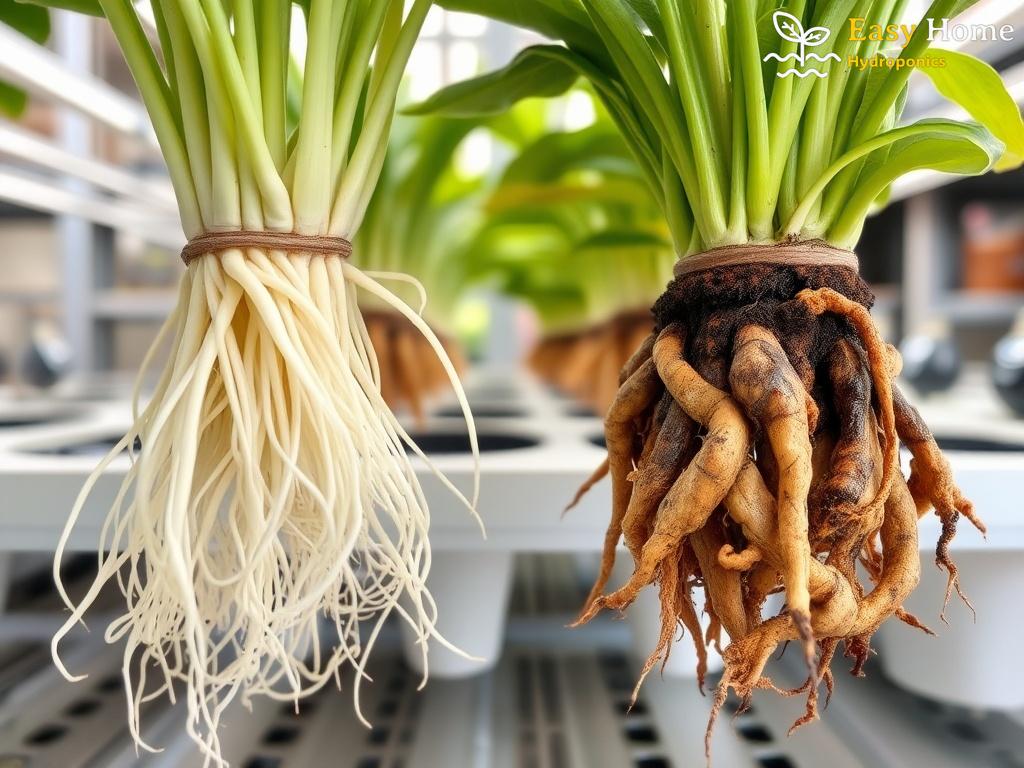Understanding Downy Mildew: The Hidden Threat

The Unseen Invader in Your Hydroponic Garden
When nurturing a hydroponic garden, growers often face numerous challenges, but few are as insidious as downy mildew. This fungal disease lurks in the shadows, waiting for the perfect moment to strike. Its rapid spread and devastating effects can turn your flourishing setup into a wilted disaster. Understanding this hidden threat is essential for every hydroponic gardener.
Recognizing the Symptoms of Downy Mildew
The first step in combating any threat is recognizing it. Downy mildew manifests itself in several ways that can be easily overlooked. Growers should be vigilant and familiar with the symptoms to ensure early detection and intervention.
- Leaf Discoloration: Initially, leaves may show yellowing patches, particularly on the upper side.
- Downy Growth: A fuzzy, grayish growth can often be seen on the underside of leaves, indicating a fungal presence.
- Wilting: Affected plants may display signs of wilting, even when adequately watered.
- Leaf Drop: In severe cases, infected leaves may drop prematurely, leading to reduced yields.
Proactive Measures to Protect Your Hydroponic Setup
Prevention is always better than cure, especially when dealing with something as destructive as downy mildew. Implementing a combination of strategies can significantly reduce the risk of an outbreak.
| Prevention Strategy | Description |
|---|---|
| Maintain Airflow | Ensure proper ventilation to reduce humidity levels, which are conducive to fungal growth. |
| Regular Monitoring | Check plants regularly for early signs of infection, allowing for prompt action. |
| Sanitize Equipment | Regularly clean and disinfect all tools and containers to prevent the spread of pathogens. |
| Use Resistant Varieties | Select plant varieties known for their resistance to downy mildew. |
By understanding the symptoms of downy mildew and taking proactive measures, hydroponic growers can protect their plants from this hidden threat. Staying informed and vigilant is key to maintaining a healthy and productive hydroponic garden.
Prevention Strategies: Fortifying Your Hydroponic Garden
In the world of hydroponics, safeguarding your plants against downy mildew is a necessary endeavor. By proactively implementing effective prevention strategies, you can fortify your garden against this stealthy intruder. These strategies not only protect your plants but also enhance the overall health and productivity of your hydroponic system.
Creating an Ideal Environment
One of the most critical aspects of preventing downy mildew is to create an environment that is inhospitable to the fungus. This involves maintaining optimal humidity levels and ensuring adequate airflow throughout your setup. High humidity can be a breeding ground for downy mildew, so consider using dehumidifiers or ventilation fans to keep moisture levels in check. Additionally, spacing your plants properly allows for better air circulation, reducing the likelihood of fungal growth.
Implementing Strict Sanitation Practices
Sanitation is paramount in the battle against downy mildew. Regularly cleaning and disinfecting all tools, containers, and surfaces in your hydroponic system will help eliminate potential sources of infection. This includes ensuring that any water used is free from contaminants and that your growing medium is properly sterilized before planting. By establishing a routine of cleanliness, you can significantly minimize the risk of introducing the fungus into your garden.
Choosing the Right Plant Varieties
Another layer of defense against downy mildew involves selecting plant varieties that have demonstrated resistance to the disease. Researching and sourcing resistant strains can be a game-changer for your hydroponic setup. Not only do these varieties thrive better in high-risk environments, but they can also yield greater returns, ensuring your hard work doesn’t go unrewarded. By making informed choices about the plants you cultivate, you can bolster your garden’s resilience against this hidden threat.
Identifying Symptoms: Spotting Downy Mildew Early
In the intricate world of hydroponics, timing can be the difference between a thriving garden and a fungal disaster. Downy mildew, a notorious adversary, can wreak havoc on your plants if not identified swiftly. Early detection is crucial for implementing effective interventions and safeguarding your precious crops. Let’s delve into the telltale signs that can help hydroponic gardeners spot downy mildew before it becomes a full-blown crisis.
Key Indicators of Downy Mildew
Recognizing downy mildew symptoms can be a challenge, especially for those new to hydroponic gardening. However, being aware of the early warning signs can empower you to take action before the situation escalates. Here’s a closer look at the critical indicators:
- Yellowing Leaves: The onset of downy mildew often starts with yellow spots or patches on the upper side of leaves, mimicking nutrient deficiencies.
- Fuzzy Undersides: One of the most distinctive signs is the appearance of a grayish-white, fuzzy growth on the underside of infected leaves, signaling fungal activity.
- Wilting Despite Adequate Water: Affected plants may exhibit wilting even when they are properly hydrated, as the disease disrupts nutrient uptake.
- Premature Leaf Drop: In severe cases, leaves may fall off before their time, which can significantly reduce overall yield and vigor.
Why Early Detection Matters
Understanding the symptoms of downy mildew and recognizing them early can dramatically alter the course of your hydroponic operation. The sooner you identify the problem, the quicker you can implement corrective measures. By maintaining a vigilant eye on your plants and being aware of these signs, you can minimize losses and ensure that your hydroponic garden remains healthy and productive. Remember, in hydroponics, knowledge and proactive management are your best allies against hidden threats like downy mildew.
Effective Treatment Options: Battling the Blight
Harnessing the Power of Natural Remedies
When downy mildew strikes, many growers are quick to reach for chemical fungicides, but there are effective natural remedies worth exploring. Utilizing organic solutions can not only help in the fight against this persistent foe but also keep your hydroponic system healthy. One popular option is neem oil, derived from the seeds of the neem tree. This powerful oil disrupts the reproduction of fungal spores and serves as an excellent preventative measure against future outbreaks. Furthermore, baking soda mixed with water acts as a mild fungicide when sprayed on infected plants, creating an alkaline environment that inhibits fungal growth. These remedies are not only eco-friendly but also promote a sustainable approach to hydroponic gardening.
Implementing Chemical Solutions Wisely
In instances where natural remedies fall short, chemical treatments can be employed as a last resort. However, it is crucial to approach this option with caution. Products containing mancozeb or chlorothalonil can effectively combat downy mildew but should be used judiciously to avoid harming beneficial microorganisms in your hydroponic ecosystem. It is advisable to apply these fungicides during the early stages of an outbreak, as they work best when the disease is still manageable. Always adhere to the manufacturer’s guidelines regarding application rates and timing to ensure the safety of your plants and the surrounding environment.
Creating a Resilient Future
While battling downy mildew can be a daunting task, incorporating a combination of treatment options will fortify your hydroponic garden against this blight. Regularly alternating between natural and chemical methods can help prevent the development of resistance in fungal populations. Additionally, monitoring your plants post-treatment is essential to ensure that the chosen methods are effective. Keeping a close eye on your hydroponic setup, maintaining optimal growing conditions, and being proactive in your approach will ensure that your plants not only survive but thrive. With diligence and the right treatment strategy, downy mildew will no longer be a hidden threat, but a challenge you can confidently overcome.
Post-Incident Care: Ensuring Long-Term Health
After battling downy mildew in your hydroponic garden, it’s crucial to shift focus from immediate recovery to long-term health. The aftermath of an outbreak can leave lingering effects on your plants and the overall environment, making it essential to implement a robust post-incident care strategy. A proactive approach not only ensures the survival of affected plants but also fortifies your garden against future invasions. Understanding the necessary steps to rejuvenate your growing space can turn a setback into a valuable learning experience.
Restoring Plant Vitality
Once the spores have been dealt with, the first course of action is to assess the condition of your plants. They may exhibit signs of stress, including discolored leaves and stunted growth. Providing adequate nutrition is vital during this recovery phase. Consider introducing a balanced nutrient solution that focuses on promoting root development and enhancing overall vigor. *A well-fed plant is better equipped to fend off future threats.* Regularly monitor your plants for any signs of resurgence and adjust nutrient levels accordingly, ensuring the health and resilience of your crops.
Rebuilding the Hydroponic Environment
The next step involves creating a healthier environment to prevent future outbreaks. Begin by thoroughly cleaning your hydroponic system, including all components like reservoirs and tubing. Sanitization is key to eliminating any lingering spores that might lead to a repeat of the previous problem. Introduce beneficial microorganisms into your system, as they can help combat pathogens and bolster plant health. Additionally, reassess your environmental conditions, such as humidity and airflow. *Implementing stricter control measures will create an inhospitable atmosphere for downy mildew.* Regular maintenance checks will keep your system in prime condition and reduce the risk of future infestations.
In conclusion, the journey doesn’t end with eradicating downy mildew; it is merely a chapter in the ongoing story of your hydroponic garden. By focusing on plant vitality and environmental health, you can ensure that your setup not only survives but thrives in the face of adversity. Each challenge faced can lead to a more resilient and productive garden, so embrace the lessons learned and continue to cultivate success.




